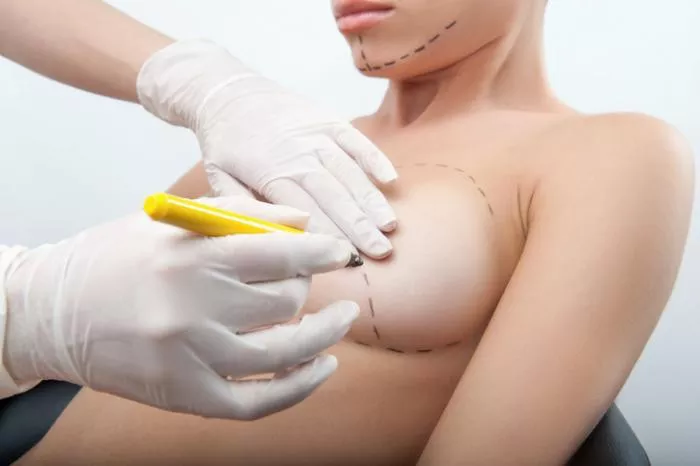Preparing for breast surgery involves a series of considerations to ensure a smooth and successful procedure. Among the questions that may arise is whether individuals can shave their legs before breast surgery. This comprehensive exploration delves into the topic, offering insights into the significance of pre-surgery preparation, addressing common concerns, and providing guidance on whether or not it’s advisable to shave legs before undergoing breast surgery.
Understanding the Pre-Surgery Protocol
Before exploring the specific question of whether to shave legs before breast surgery, it’s crucial to understand the broader pre-surgery protocol. Surgeons typically provide individuals with detailed instructions on how to prepare for their procedure. This may include guidelines on fasting, medication management, and hygiene practices. The goal is to create an optimal environment for surgery and reduce the risk of complications. While shaving legs is not always explicitly mentioned in pre-surgery instructions, understanding the overall importance of adhering to the provided guidelines sets the stage for a comprehensive approach to preparation.
Hygiene and Sterility
Maintaining a high level of hygiene and sterility is paramount in any surgical setting. Surgeons and medical staff follow rigorous protocols to minimize the risk of infections and ensure a safe surgical environment. In the context of breast surgery, where incisions are made, maintaining cleanliness is particularly crucial. Individuals are typically advised to shower with a special antibacterial soap on the evening before or morning of surgery. This step helps reduce the presence of bacteria on the skin, minimizing the risk of postoperative infections. Shaving legs, while not directly related to breast surgery, can be considered as part of an individual’s overall hygiene routine in the lead-up to the procedure.
The Potential Impact of Shaving
Shaving legs before breast surgery is a common practice for many individuals who prioritize personal grooming. However, concerns may arise regarding the potential impact of shaving on the surgical process. One primary concern is the risk of nicks, cuts, or irritation from shaving, which could potentially introduce bacteria into the surgical site. While the legs are not directly related to the breast surgery area, maintaining skin integrity and minimizing the risk of infection are overarching considerations. This section addresses these concerns and explores whether alternatives to traditional shaving may be more suitable in the pre-surgery period.
Alternatives to Traditional Shaving
For individuals who wish to maintain smooth legs without using a traditional razor in the pre-surgery period, exploring alternative hair removal methods is a viable option. Depilatory creams, which work by breaking down the structure of hair, offer a no-cut solution that may be gentler on the skin. However, it’s essential to check with the surgical team or follow specific pre-surgery instructions, as some depilatory creams may contain ingredients that could cause irritation. Waxing is another option, but it should be done well in advance of the surgery to allow any potential redness or irritation to subside. This section provides insights into alternative methods and emphasizes the importance of communicating with the surgical team before making any decisions.
Communication with the Surgical Team
Amidst the various considerations related to pre-surgery grooming, communication with the surgical team emerges as a crucial step. Surgeons and their support staff are committed to ensuring the well-being of individuals undergoing breast surgery. Open and transparent communication about any concerns, questions, or preferences, including those related to shaving legs, is highly encouraged. This collaborative approach allows the surgical team to provide personalized guidance based on the individual’s unique circumstances and the specific requirements of the surgery. Individuals should feel empowered to discuss their preferences and seek clarity on any aspect of the pre-surgery preparation process.
The Role of Personal Comfort
While following pre-surgery instructions is essential for creating an optimal surgical environment, the role of personal comfort should not be overlooked. Feeling at ease and confident before entering the operating room contributes to a positive surgical experience. In the context of shaving legs before breast surgery, individuals may weigh the desire for personal grooming against the potential concerns related to skin irritation or infection. This section explores the importance of finding a balance between adhering to medical guidelines and addressing personal comfort, emphasizing the role of individual choice in the pre-surgery preparation process.
Post-Surgery Considerations
Once breast surgery is complete, the focus shifts to post-surgery care and recovery. While the act of shaving legs before breast surgery is a preoperative consideration, post-surgery care is equally important in ensuring a smooth healing process. Surgeons provide specific guidelines for postoperative care, including instructions on wound care, activity restrictions, and follow-up appointments. Individuals should prioritize these post-surgery instructions to support the healing of incisions and promote overall well-being. This section emphasizes the continuum of care from pre-surgery preparation through the postoperative phase.
Conclusion
In conclusion, the question of whether to shave legs before breast surgery is part of a broader conversation about pre-surgery preparation. Maintaining hygiene and sterility, addressing concerns about shaving-related irritation, exploring alternative hair removal methods, and, most importantly, communicating openly with the surgical team are all integral aspects of this process. Balancing medical guidelines with personal comfort, while understanding the importance of both, allows individuals to approach breast surgery with confidence and a sense of empowerment. As part of the holistic journey toward breast surgery, a comprehensive approach to pre-surgery preparation sets the stage for a positive surgical experience and optimal postoperative outcomes.

